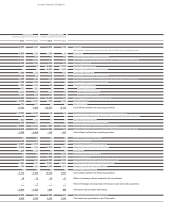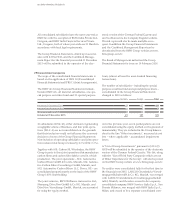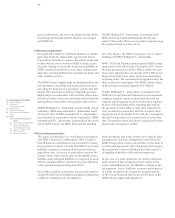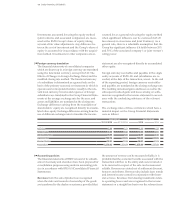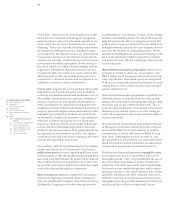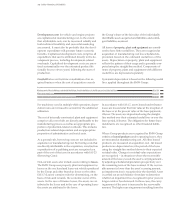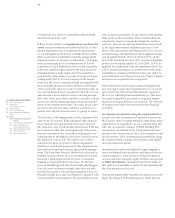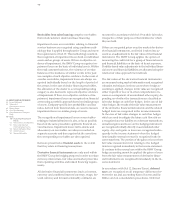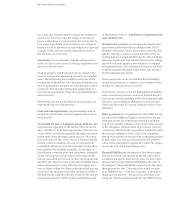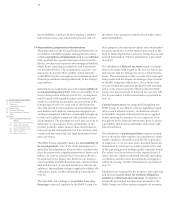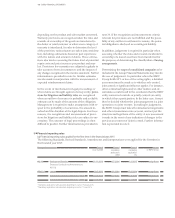BMW 2015 Annual Report Download - page 105
Download and view the complete annual report
Please find page 105 of the 2015 BMW annual report below. You can navigate through the pages in the report by either clicking on the pages listed below, or by using the keyword search tool below to find specific information within the annual report.105 GROUP FINANCIAL STATEMENTS
classified. No held-for-trading financial assets are
in-
cluded under this heading.
A financial instrument is a contract that gives rise to a
financial asset of one entity and a financial liability or
equity instrument of another entity. Once a BMW Group
entity becomes party to such to a contract, the financial
instrument is recognised either as a financial asset or as
a financial liability.
Financial assets are accounted for on the basis of the set-
tlement
date. On initial recognition, they are measured
at their fair value. Transaction costs are included in the
fair value unless the financial assets are allocated to the
category “financial assets measured at fair value through
profit or loss”.
The Group’s financial assets are allocated to either
cash
funds or to the categories “loans and receivables”,
“available-for-sale”, “held for trading” or “fair value
option”.
The prerequisite for categorising an item as a “financial
asset measured at fair value through profit and loss” is
that
– a measurement or recognition inconsistency (“ac-
counting mismatch”) is eliminated or significantly
reduced or
– a group of financial instruments is managed, and
its performance evaluated, on a fair value basis or
– the financial instrument contains one or more
embedded derivatives that are required to be
separated.
Financial assets, for which the fair value option is ap-
plied, include other investments, and remain in the
relevant balance sheet line item after initial recognition.
Gains and losses are presented in the income statement
line item “Other financial result” and interest income
and expenses are presented within the net interest result.
Subsequent to initial recognition, financial assets which
are available-for-sale or held-for-trading or for which
the fair value option is applied, are measured at their fair
value. When market prices are not available, the fair
value of available-for-sale financial assets is measured
using appropriate valuation techniques e. g. discounted
cash flow analysis based on market information available
at the balance sheet date.
Available-for-sale assets include non-current invest-
ments,
securities and investment fund shares. This cate-
gory includes all non-derivative financial assets which
are not classified as “loans and receivables” or “held-to-
maturity investments” or as items measured “at fair value
through profit and loss”.
Loans and receivables which are not held for trading
and held-to-maturity financial investments with a fixed
term are measured at amortised cost using the effec-
tive
interest method. All financial assets for which
pub-
lished price quotations in an active market are not
avail-
able and whose fair value cannot be determined reliably
are required to be measured at cost.
In accordance with IAS 39 (Financial Instruments:
Recognition and Measurement), assessments are made
regularly as to whether there is any objective evidence
that a financial asset or group of assets may be impaired.
Available-for-sale financial assets are written down if
there is objective evidence that impairment has occurred.
In the case of equity capital instruments that are listed
on a stock market, it is assumed that an item is impaired
if its fair value falls significantly (more than 20 %) or on
a prolonged basis (more that 5 % over nine months) be-
low
acquisition cost. Impairment losses identified after
carrying out an impairment test are recognised as an ex-
pense.
Gains and losses on available-for-sale financial
assets are recognised directly in other accumulated
equity
until the financial asset is disposed of or is deter-
mined to be impaired, at which time the cumulative loss
previously recognised in other comprehensive income
is reclassified to profit or loss for the period.
With the exception of derivative financial instruments,
all receivables and other current assets relate to loans
and receivables which are not held for trading. All such
items are measured at amortised cost. Appropriate
impairment losses are recognised to take account of all
identifiable risks.


